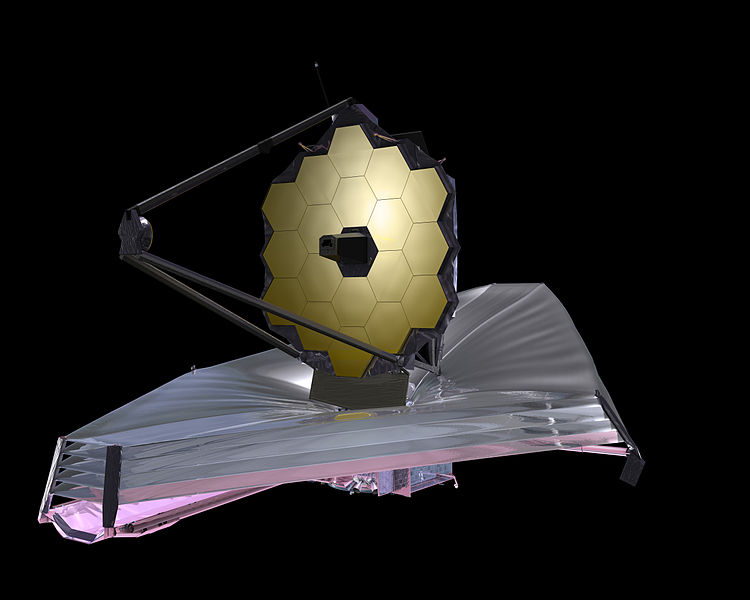The James Webb Space Telescope, which launched on Dec. 25, 2021, has reached its final orbit.
Unlike the Hubble, which orbits the Earth, the James Webb Telescope orbits the sun at the second Lagrange Point (L2), about 1.5 million kilometers away from Earth. According to NASA, this special orbit will allow it to stay in line with Earth. This new telescope’s orbit is hardly what makes it special, though.
This successful deployment of the telescope is a huge leap forward for NASA. Webb program director Gregory L. Robinson stated, “This is the first time a NASA-led mission has ever attempted to complete a complex sequence to unfold an observatory in space.” Since its arrival at L2 on Jan. 24, the telescope has commenced instrument calibration and will be fully commissioned by late May of 2022.
Named after the administrator of NASA responsible for the Apollo missions, the telescope will utilize a host of cutting-edge technologies, chiefly four types of infrared instruments and a massive 6.5-meter gold-plated primary mirror.
Physics teacher and Astronomy Club advisor Ian Spangenberg explained the importance of the technology utilized on the telescope. “Webb will be able to look further than any telescope has before,” he said. “A bigger aperture collects more light [than] a smaller one and you can see things that you wouldn’t otherwise be able to see in those dark conditions. James Webb is much much bigger than Hubble.”
Spangenberg continued, “James Webb will be able to see a lot dimmer objects. In the world of astronomy, dimmer means further away. The further away something is, the further back in time you are looking at it because it takes time for the light to travel through space. So, because James Webb is so much bigger than Hubble, thus having a lot more light collecting area, it will be able to look much further back in time than Hubble ever was.”
According to NASA’s Goddard Space Flight Center, the James Webb will be able to gaze back an astonishing 13.5 billion years, allowing astronomers to study the formation of galaxies and early planetary systems. Spangenberg illustrated the significance of this advancement, explaining the value the new telescope will have in studying the motions and processes occuring in the early universe. Ultimately, astronomers will be able to better understand the evolution of the universe and how it will change in the future.
Furthermore, using infrared light will allow astronomers to look deeper into the universe, allowing the James Webb to build on the visible light discoveries of the Hubble. The implementation of infrared technology will allow scientists to look through the clouds of dust surrounding star formation and much of the universe that block visible light.
There is another advantage to using infrared light. “Stars put out lots of ultraviolet, x-rays, etc. Because we want to take pictures of stuff that is so far away and the light has been traveling so long, a lot of the UV and x-ray light that was emitted billions of years ago has been redshifted to the infrared spectrum by the expansion of the universe,” Spangenberg added. “So, when we take pictures of a star in the infrared, we are really taking a picture of its UV or x-ray emission…crazy.”
Many students interested in astronomy and physics have been filled with anticipation since the launch of the mission. Junior Nikhil Ramaraju noted his enthusiasm for the project. “The observations the James Webb Space Telescope will make will change our perception of the universe. I’m really excited to see what comes of it. It feels like we’re on the cusp of an explosion of knowledge,” he said.
Spangenberg described the Astronomy Club discussions that he looks forward to as a result of this new piece of technology. “The cool thing about astronomy is there are always more rabbit holes to go down. Just think about how the simple sentence that James Webb takes pictures in infrared rather than visible light forms countless different subtopics to explore,” he said.
Students who attend Astronomy Club have the opportunity to ask questions about the universe, but also tangible subjects from everyday life. It’s not only for people interested in physics or math. “Astronomy is amazing because it’s literally the study of everything. That means Astronomy Club gets to learn about, well, everything,” Spangberg commented. “Those who investigate mysteries are the ones who love the mystery the most.”
In addition to the discoveries that the James Webb telescope will make, its design and construction is inspiring to students interested in engineering. “It’s a ridiculously complex project and it’s really cool to think about the massive team of people that worked on it. Like they literally spent decades of their lives building this unbelievably specialized scientific tool. That’s something that I could really aspire towards, dedicating half of my life to building something that would expand humanity’s vision,” said senior Carter Dougherty.
The James Webb will undoubtedly uncover new secrets about the universe. The students of today will lead the way in developing technology and experimentation to answer the questions posed by the telescope’s discoveries.
The James Webb Space Telescope will certainly continue to make history and inspire students as it begins its mission to study the early universe.









